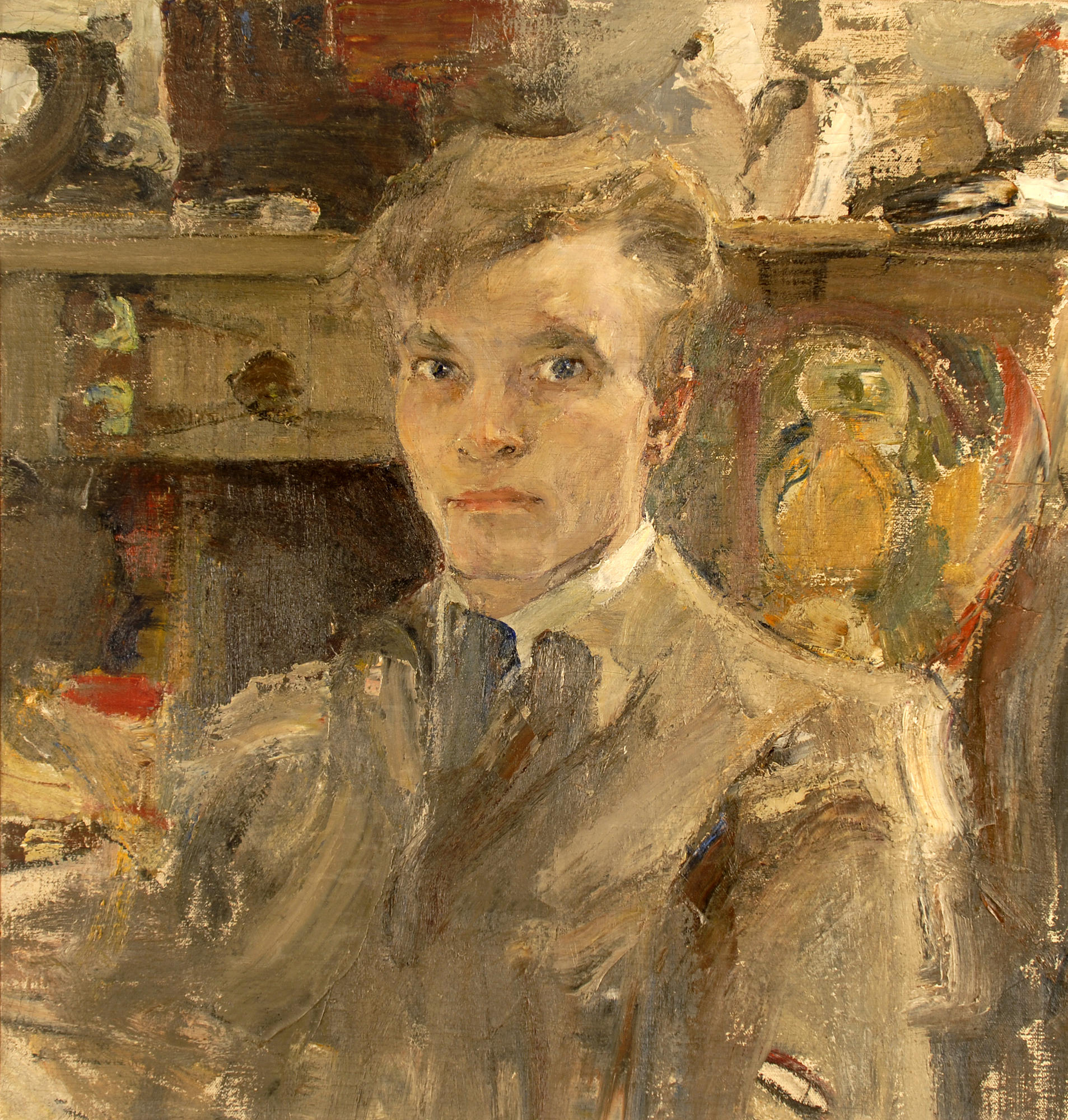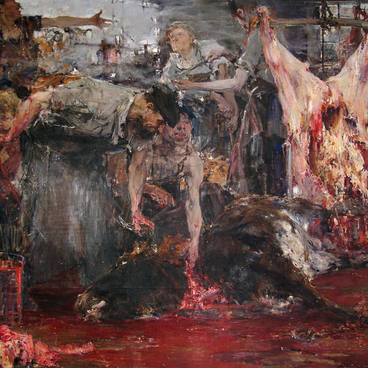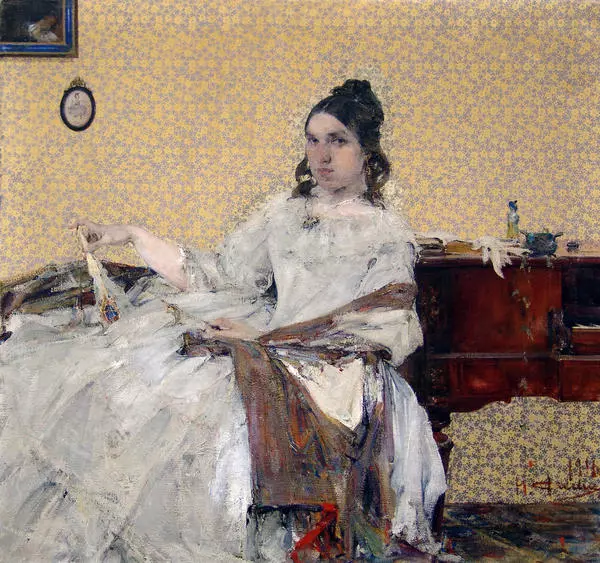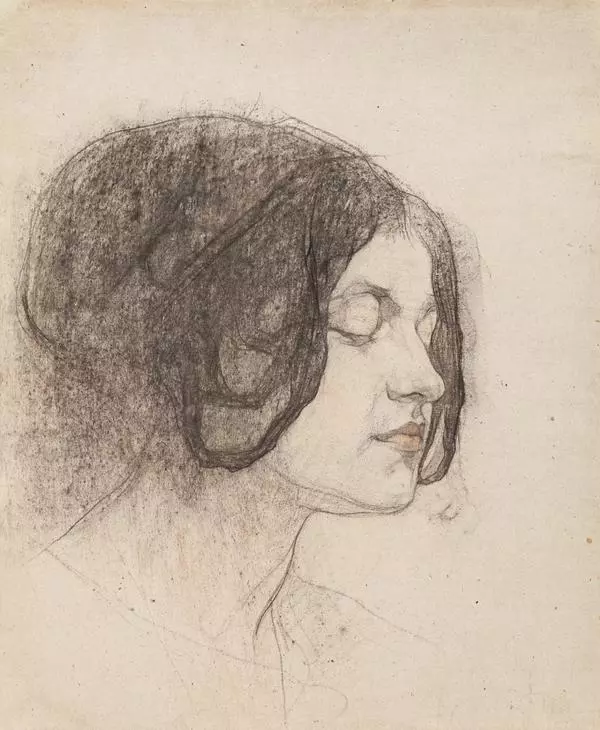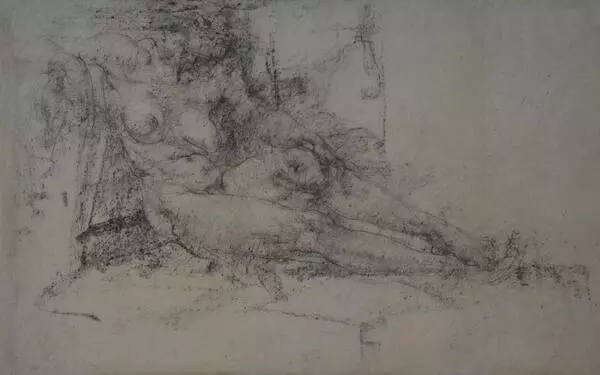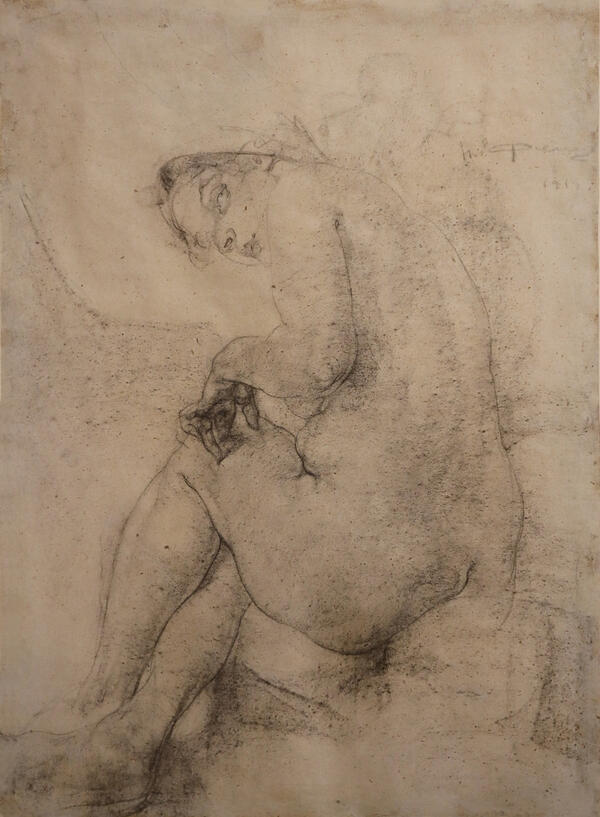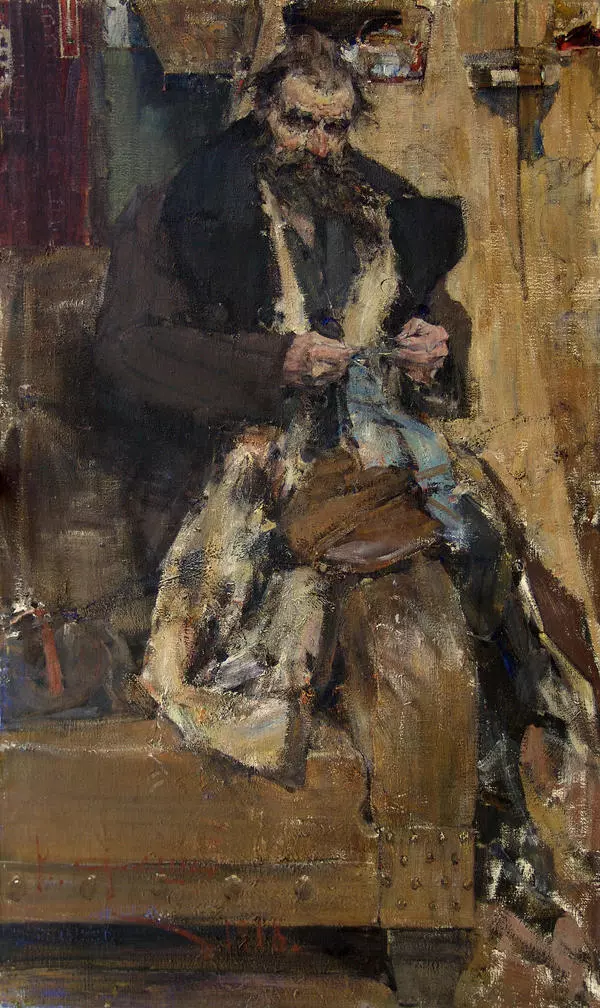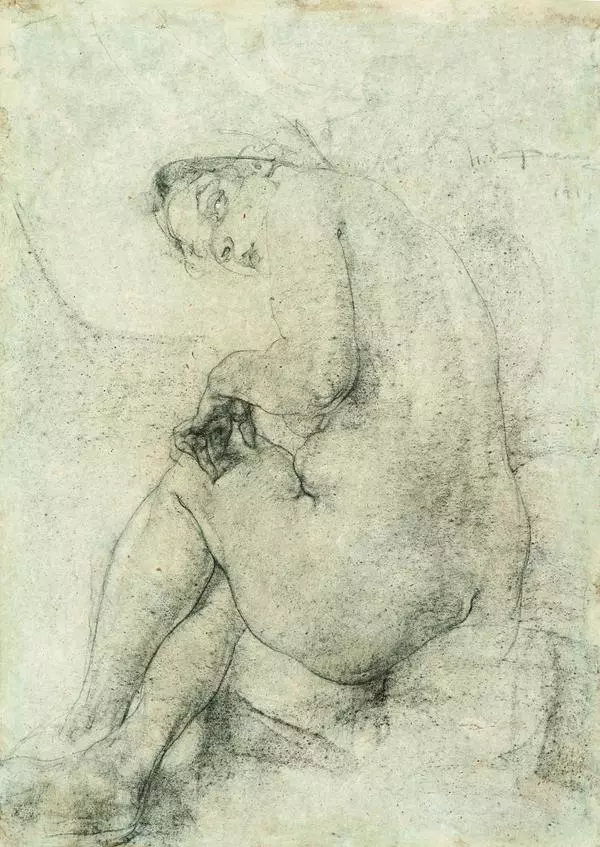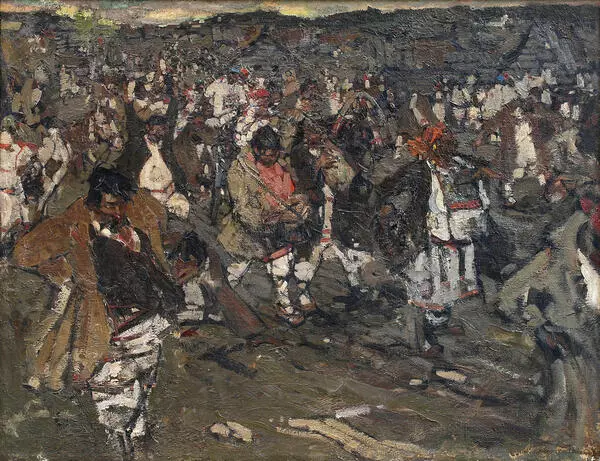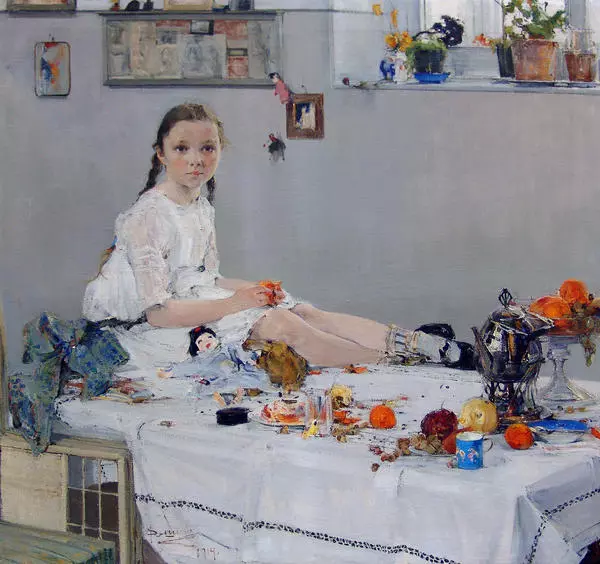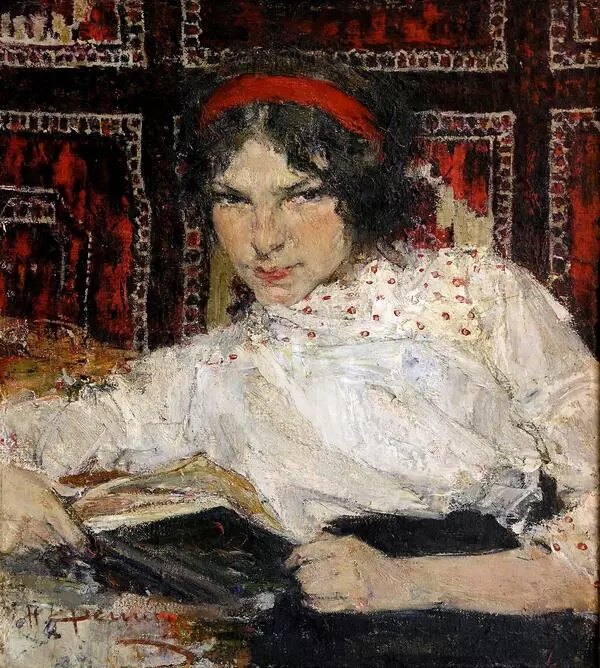Nikolai Fechin is mainly known as a master of portraiture. As a student of the Art Academy, he learned to reveal psychological nature under Ilya Repin. However, the painter was not a rigid follower of the realistic school; new movements - Impressionism and Modernism - manifested in his works. The portraits made by him are unflattering but Fechin thought it more important to convey the character of the subject with all its traits than to catch a likeness. He highly appreciated the ability of his contemporary Valentin Serov to portray the essence of the character
Among Fechin’s numerous self-portraits, this work is notable for its profound sincerity and spiritual meaning. The peculiarities of his own appearance – a proud posture, a young face with high cheeks and an intent gaze of the blue eyes - are portrayed by the painter with great skill. The modeling of the face is very delicate while the rest - the suit, the room, the furniture - is just outlined with expressive chaotic brushstrokes. That seeming incompleteness makes Fechin’s works dynamic and impressionistic. The artist uses his favorite silvery and pearly color scheme, the brushwork is sweeping but smooth as well.
The self portrait was made in Fechin’s studio which was in the Kazan Art school. The furniture in the background was crafted by the painter himself. He was a skillful carver in wood, having learned from his father in childhood the art of building altars. As a true painter of the Modern era, he worked in a stylized, based on folk art manner, decorating shelves, cabinets, chests and other furniture.
Only a small part of Fechin’s handiwork created in Kazan has been preserved till now. One can have an idea of Fechin’s mastery of carving, visiting his former house turned into a museum in Taos, US. The painter had designed the house and decorated it with carving.
For a long time, the portrait was believed to have been made in 1920 but recently a new version emerged. A research was made by art experts who compared Fechin’s photos of different periods and concluded that the portrait had been painted around 1908.
Among Fechin’s numerous self-portraits, this work is notable for its profound sincerity and spiritual meaning. The peculiarities of his own appearance – a proud posture, a young face with high cheeks and an intent gaze of the blue eyes - are portrayed by the painter with great skill. The modeling of the face is very delicate while the rest - the suit, the room, the furniture - is just outlined with expressive chaotic brushstrokes. That seeming incompleteness makes Fechin’s works dynamic and impressionistic. The artist uses his favorite silvery and pearly color scheme, the brushwork is sweeping but smooth as well.
The self portrait was made in Fechin’s studio which was in the Kazan Art school. The furniture in the background was crafted by the painter himself. He was a skillful carver in wood, having learned from his father in childhood the art of building altars. As a true painter of the Modern era, he worked in a stylized, based on folk art manner, decorating shelves, cabinets, chests and other furniture.
Only a small part of Fechin’s handiwork created in Kazan has been preserved till now. One can have an idea of Fechin’s mastery of carving, visiting his former house turned into a museum in Taos, US. The painter had designed the house and decorated it with carving.
For a long time, the portrait was believed to have been made in 1920 but recently a new version emerged. A research was made by art experts who compared Fechin’s photos of different periods and concluded that the portrait had been painted around 1908.
